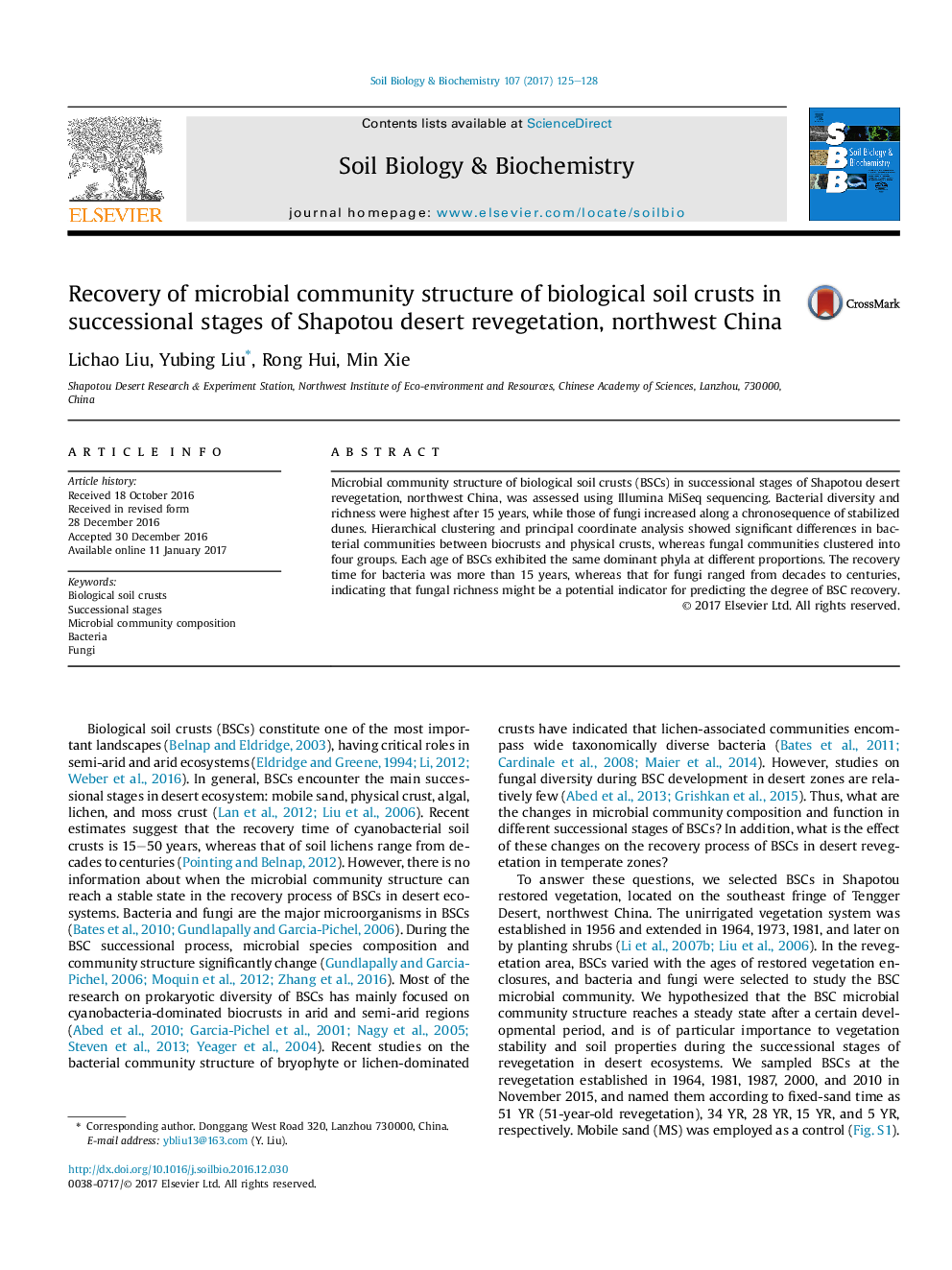| Article ID | Journal | Published Year | Pages | File Type |
|---|---|---|---|---|
| 5516421 | Soil Biology and Biochemistry | 2017 | 4 Pages |
â¢The initial 15-year restoration was critical for BSCs in Tengger Desert vegetation.â¢It need more than 15 years to recover for bacteria and more time for fungi in BSCs.â¢Fungal richness could be a potential indicator for the recovery process of BSCs.
Microbial community structure of biological soil crusts (BSCs) in successional stages of Shapotou desert revegetation, northwest China, was assessed using Illumina MiSeq sequencing. Bacterial diversity and richness were highest after 15 years, while those of fungi increased along a chronosequence of stabilized dunes. Hierarchical clustering and principal coordinate analysis showed significant differences in bacterial communities between biocrusts and physical crusts, whereas fungal communities clustered into four groups. Each age of BSCs exhibited the same dominant phyla at different proportions. The recovery time for bacteria was more than 15 years, whereas that for fungi ranged from decades to centuries, indicating that fungal richness might be a potential indicator for predicting the degree of BSC recovery.
